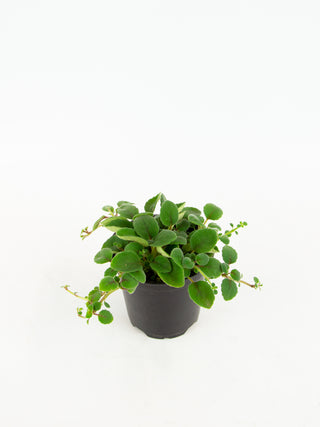Commonly called a "Lace Flower" plant. Native to Mexico, this trailing plant has soft velvety foliage, a creeping growth habit, and bloom prolifically! Their blooms are white with frills in the edges of the petals and inside its dotted with pink spots too. These plants were really popular in the 70’s and then it seems like they fell out of large-scale horticultural production. They can quickly create a lush hanging pot as well!
Care:
This species is closely related to African Violets, so can be treated very similarly. Keep them in a bright filtered light while avoiding any direct sun that could burn foliage. They like to be slightly on the moist side so can be watered roughly when the top 1" of soil starts to feel dry. This may roughly be every 5-7 days depending on your home environment. When repotting, use an all purpose soil medium.
All of our plants are ethically sourced from certified U.S. nurseries. We strongly condemn the poaching of plants or wild collection.
Commonly called a "Lace Flower" plant. Native to Mexico, this trailing plant has soft velvety foliage, a creeping growth habit, and bloom prolifically! Their blooms are white with frills in the edges of the petals and inside its dotted with pink spots too. These plants were really popular in the 70’s and then it seems like they fell out of large-scale horticultural production. They can quickly create a lush hanging pot as well!
Care:
This species is closely related to African Violets, so can be treated very similarly. Keep them in a bright filtered light while avoiding any direct sun that could burn foliage. They like to be slightly on the moist side so can be watered roughly when the top 1" of soil starts to feel dry. This may roughly be every 5-7 days depending on your home environment. When repotting, use an all purpose soil medium.
All of our plants are ethically sourced from certified U.S. nurseries. We strongly condemn the poaching of plants or wild collection.

